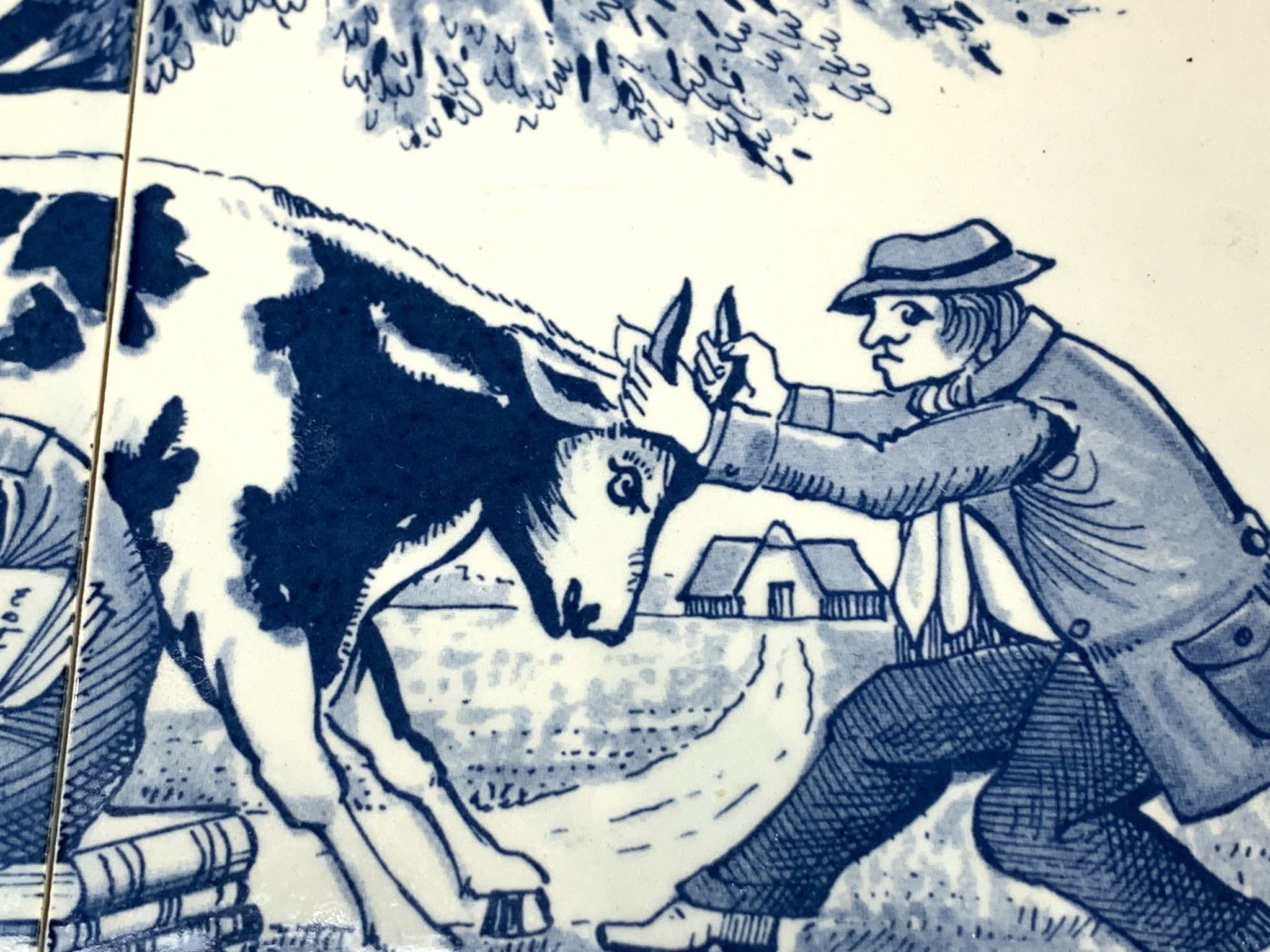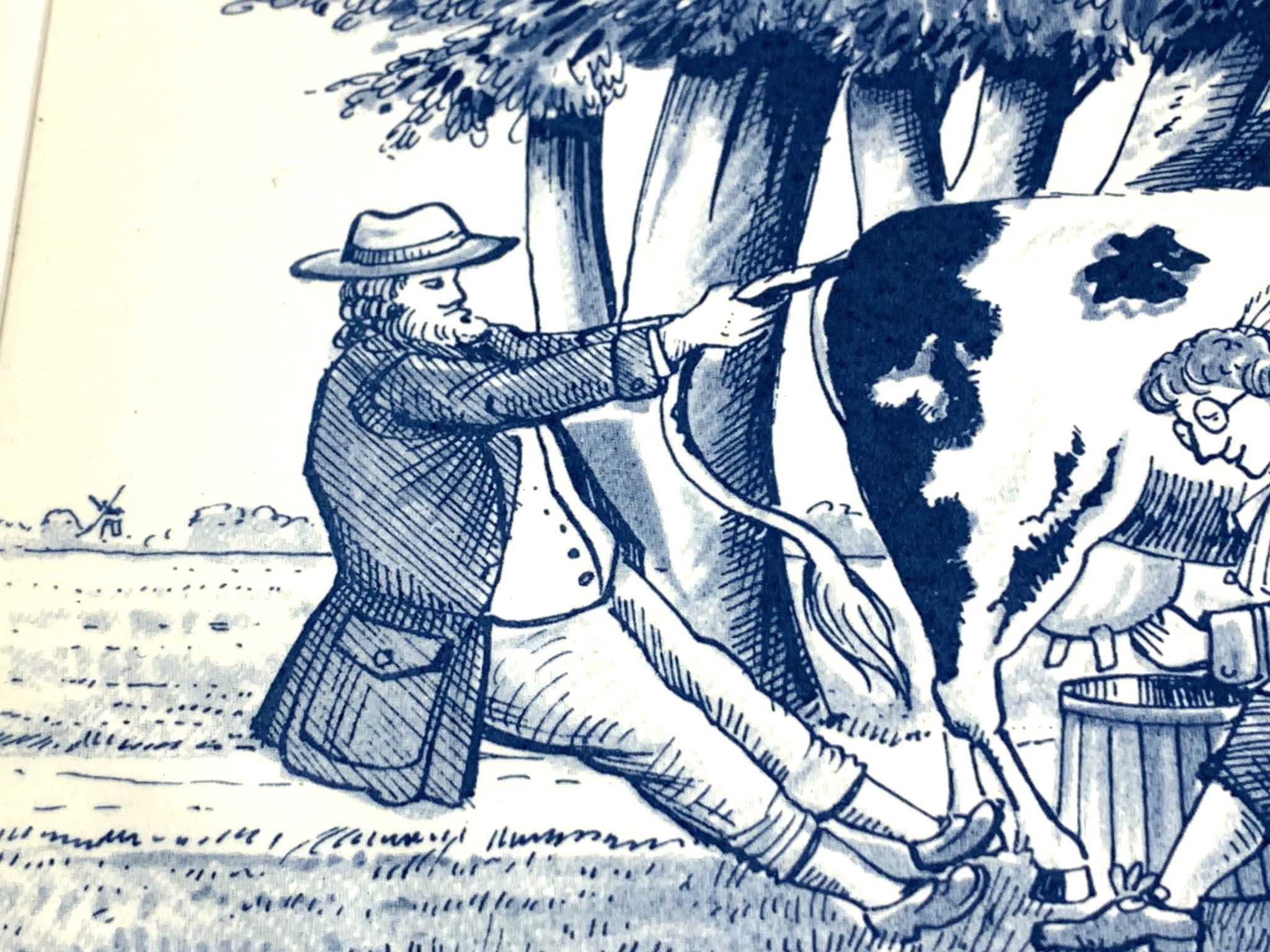Irreverent Dutch Trivet
This blue and white Dutch trivet from a prior QBO sale is made of tiles framed in wood. It depicts two arguing men, a third, self- satisfied middle-man, and a disgruntled dairy cow. And yes, it is meant to be funny – it’s essentially an early political cartoon. So what exactly is the point being made by this trivet and is it still relevant 200-300 years later?

Well, the two men locked in the tug-of-war are probably farmers, but the gentleman seated in the middle, smugly milking the cow for himself while they tussle is definitely not a farmer. His long curly wig, glasses and the sheaf of legal papers tucked under his arm identify him as a lawyer or judge, as does the big stack of books he’s sitting on. The Dutch-language caption “Die pleit om een Koe, geeft er één toe” translates as “He who sues for a cow concedes one”. In other words, when you sue someone, no matter what the outcome, it is the judiciary that ultimately wins, not the accuser or the defendant. The fact that the battling farmers are not in the same economic class as the lawyer/judge just adds to the sting. And, although the building in the distance here resembles a farmhouse, on other, larger versions of this ‘cartoon’ it is clearly a church, throwing a distant and disinterested religious authority into the mix. So, the argument could be made that the witty dig is as relevant as ever (alas).

The cow tug-of-war was a popular comedic theme that was copied by different tile manufacturers; it was one of many popular designs from a 300 year-long run of Dutch ceramic making during which over 800 million tiles were produced by hundreds of manufacturers across the Netherlands. Most factories were concentrated in Delft or Harlingen, but this particular design may have originated in Utrecht.

|
